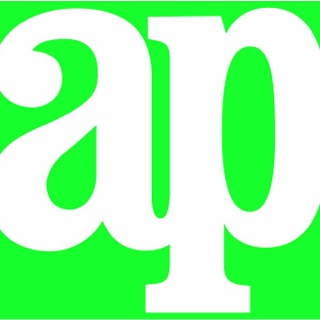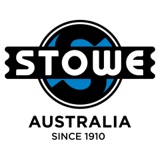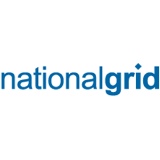Information
-
Audit Title
-
Client / Site
-
Conducted on
-
Prepared by
-
Location
-
Personnel
1. Administrative Procedures
-
15.1. Lack of/or inadequate Site Specific Safety Plan?
-
15.2. Failure to obtain permits for Hot Work, Confined Space, Dig Permits, etc?
-
15.3. Lack of/or inadequate site specific orientations for workers, subcontractors and visitors?
-
15.4. Lack of/or inadequate supervision? Superintendent/Foreman?
-
15.5. Lack of/or inadequate training, licenses, skills, experience?
-
15.6. Lack of/or inadequate site specific plans for high risk work, critical lift, confined space, excavations, fall protection?
-
15.7. Lack of/or inadequate system to review site specific safety plans, A&P and subcontractors?
-
15.8. Lack of/or inadequate incident/accident notification procedures?
-
15.9. Lack of/or inadequate weekly safety audits and storm water audits?
-
15.10. Safety postings in place?
-
15.11. Weekly safety meetings for A&P and all subcontractors?
-
15.12. Public safety - fencing, danger signs, flaggers, cones, barricades?
2. Emergency Response/Crisis Management
-
2.1. Lack of/or inadequate crisis management plan for site? Crisis management kit on site?
-
2.2. Emergency procedures and phone numbers not displayed on site?
-
2.3. Lack of/or inadequate training and drills conducted for crisis management plan?
-
2.4. Lack of/or inadequate first aid kit on site? Fully stocked?
-
2.5. Insufficient access to formally trained first aid personnel? A&P and subcontractor foremen?
-
2.6. Lack of/or inadequate communication equipment?
3. Occupational Health Hazards
-
3.1. Site specific demolition in place?
-
3.2. Lack of/or inadequate dust suppression system?
-
3.3. Asbestos issues and abatement?
-
3.4. Lead issues and abatement?
4. Pre-Task Planning
-
4.1. Pre-task planning forms/cards filled out daily and with each new task?
-
4.2. Pre-task planning forms/cards incomplete? Missing information?
-
4.3. Not following JHA procedures?
-
4.4. Lack of/or inadequate training on pre-task planning for employees and subcontractors?
5. Working at Heights
-
5.1. Fall risks of 6ft or more? (including voids, pits, and trenches)
-
5.2. Lack of edge protection? Guardrails, toe boards?
-
5.3. Unsafe or incomplete edge protection? Guardrails, toe boards?
-
5.4. Is there adequate overhead falling object protection?
6. Power and Hand Tools
-
6.1. Unsafe or damaged equipment? (including missing or damaged guards)
-
6.2. Incorrect equipment or tools for the job? (e.g. grinding discs for cutting)
-
6.3. Hand and power tools in good condition?
-
6.4. Trained and/or certified operators?
-
6.5. Powder actuated tools - signage, training, tool left unsupervised, unspent rounds, rounds disposed of properly?
-
6.6. Lack of LOTO procedures for cleaning, servicing and maintenance?
-
6.7. Hand and power tools inspected prior to use and tagged out if defective or unsafe?
7. Scaffolds
-
7.1. Competent person on site for scaffold erection?
-
7.2. Unsafe or incomplete scaffold?
-
7.3. Daily inspections completed and documented?
-
7.4. All open sides and ends of scaffold over 6ft have standard guardrails and toe boards?
-
7.5. Proper access ladders or stairs to scaffold?
-
7.6. Safe Work Load (SWL) exceeded? (tools, stored materials, number of persons)
-
7.7. Scaffold set on base plates and secured to mud sills?
-
7.8. Are wheels on rolling scaffold locked when in use?
-
7.9. Are all scaffolding components free from damage?
8. Cranes and Lifting Equipment
-
8.1. Unsafe or damaged equipment?
-
8.2. Lack of maintenance, testing and inspection?
-
8.3. Loads lifted over persons, close proximity to obstacles incl. overhead power lines?
-
8.4. Lack of safety stickers or operator manual?
-
8.5. Annual, monthly and daily inspections available?
-
8.6. Unsafe or damaged lifting equipment, including ropes, slings, chains, hooks?
-
8.7. Certified and trained operator, riggers and signal persons?
-
8.8. Lack of LOTO procedures for cleaning, servicing and maintenance?
-
8.9. Unlicensed operators?
-
8.10. Safe working load of equipment exceeded?
-
8.11. Is the swing radius barricade in place on cranes?
-
8.12. Are tag lines used to control loads?
-
8.13. Is there a fire extinguisher in all cabs?
9. Fall Protection Equipment
-
9.1. Unsafe or damaged harness or equipment?
-
9.2. Incompatible hooks/equipment?
-
9.3. Unlabeled or does not meet OSHA standards?
-
9.4. Unsafe or uncertified anchor points?
-
9.5. Lack of inspection protocol for equipment?
-
9.6. Lack of or inadequate formal training for operators?
-
9.7. Equipment worn properly?
10. Ladders and Stairs
-
10.1. Unsafe or damaged ladders?
-
10.2. Unsafe positioning of ladders? 3ft above landing?
-
10.3. Ladder not properly secured?
-
10.4. Ladder unsuitable for job? Aluminum ladders? Folding ladder used as an extension ladder?
-
10.5. Ladder safety warning stickers, duty rating legible?
-
10.6. Stairs - handrails, stair rails, lighting, pans filled?
11. Hazardous Chemical (Including Fuel and Oil)
-
11.1. Unsafe storage location? (e.g. flammables near ignition sources, spills could enter stormwater drains, etc)
-
11.2. Incompatible chemicals stored near each other? Oxygen/acetylene not separated?
-
11.3. Inadequate spill containment equipment?
-
11.4. Safety Data Sheets not accessible on site?
-
11.5. Lack of emergency procedures for injury/spills/fire etc?
-
11.6. Excessive quantities stored on site or in vehicles?
-
11.7. Insufficient ventilation?
-
11.8. Insufficient, or incorrect, PPE?
-
11.9. Unsuitable storage containers? Unlabeled containers?
12. Traffic Management
-
12.1. Lack of, or inadequate, Traffic Management Plan (TMP) in place?
-
12.2. Lack of training in TMP for all persons on site? <br>(contractors and visitors)
-
12.3. Inadequate controls for TMP? (physical barriers, bollards, speed limits, flashing lights, spotters, etc)
13. Personal Protective Equipment (PPE)
-
13.1. Lack of, or inadequate PPE (including sun protection)
-
13.2. Lack of system to issue, inspect, replace and monitor PPE?
-
13.3. Lack of training in safe use, clean-up and inspection of PPE?
-
13.4. Respirator Program - medical exam, fit test, written program, voluntary use documentation?
14. Work Environment
-
14.1. Lack of/or inadequate amenities? (toilets, wash areas, lunch rooms, etc)
-
14.2. Insufficient lighting? Temp light maintenance?
-
14.3. Inadequate housekeeping?
-
14.4. Drinking water provided? Cups/trash receptacle?
-
14.5. Impalement hazards protected? Rebar capped?
-
14.6. Laser training, signs posted?
-
14.7. Floor holes covered or protected?
15. Electrical Hazards
-
15.1. Unsafe electrical cords/leads?
-
15.2. Lack of GFCI protection?
-
15.3. Exposure to underground utilities? Locate ticket in place?
-
15.4. Exposure to overhead electrical lines?
-
15.5. Overloading outlets?
-
15.6. Cords/Leads placed on ground or on metal structures? Cords protected from damage?
-
15.7. Electrical equipment or cords/leads near water?
-
15.8. Electrical equipment near flammables?
-
15.9. Electrical cords/leads creating tripping hazards?
-
15.10. Lack of Lock-out/tag-out (LOTO) procedures for electrical equipment?
-
15.11. Are there proper warning signs on electrical rooms? Electrical rooms locked?
16. Fire Protection
-
16.1. Fire extinguishers properly located?
-
16.2. Monthly and annual inspections up to date?
-
16.3. Fire watch and fire extinguishers for all Hot Work?
17. Excavations and Trenching
-
17.1. Competent person on site?
-
17.2. Dig permit in place for each dig location (Daily)?
-
17.3. Proper sloping, shoring, benching?
-
17.4. Spoil and equipment back 2ft or more from edge?
-
17.5. Ladder in place over 4ft deep and every 25ft and secured?
-
17.6. Are open trenches and excavations adequately barricaded?
18. Housekeeping
-
18.1. Are aisles, corridors and building access areas free of debris and materials?
-
18.2. Are there adequate trash containers and dumpsters for trash and recyclables?
19. Aerial Boom and Scissor Lifts
-
19.1. Aerial boom lift and scissor lift operators trained and have a card?
-
19.2. Are aerial boom lift operators and workers wearing proper fall protection equipment?
-
19.3. Are scissor lift guardrails and safety chain in use?
20. Forklifts, Trucks and Heavy Equipment
-
20.1. Do forklift operators have proof of training?
-
20.2. Does equipment have seat belts installed? Are they serviceable?
-
20.3. Are equipment operators wearing seat belts?
-
20.4. Does equipment have an operable back up alarm and front horn?
-
20.5. Are equipment operators making eye contact with workers on the ground?
-
20.6. Fire extinguisher mounted and readily accessible on equipment? Inspected regularly?
-
20.7. Are operator manuals in place and accessible on equipment?
21. Stormwater Management
-
21.1. Has the SWMPPP Plan for this site been developed?
-
21.2. Has the Stormwater Permit been applied for and received?
-
21.3. Are Stormwater Audits completed weekly and after every weather event?
-
21.4. Is the project Stormwater map posted? Changes updated on map?
-
21.5. Are BMP deficiencies corrected within 24 hours?
Corrective Actions
-
Enter any corrective actions that will be undertaken
Sign Off
-
On site representative
-
Auditor's signature










